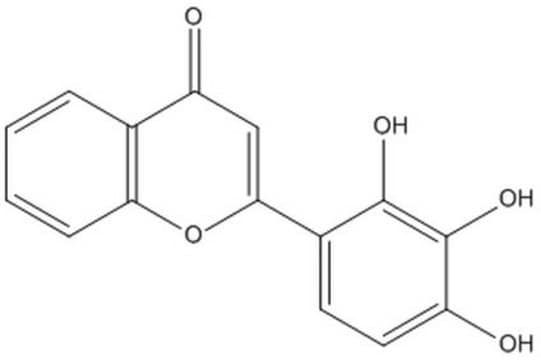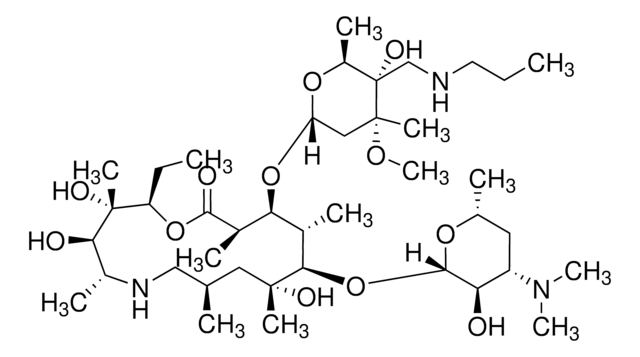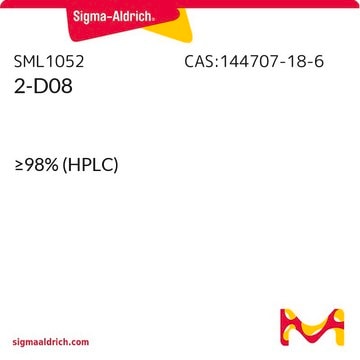75741
Ginkgolic acid C15:1
analytical standard
Synonym(s):
22:1-ω7-Anacardic acid, 6-[(8Z)-Pentadecenyl]-salicylic acid, Anacardic acid monoene, Ginkgolic acid I, Romanicardic acid
About This Item
Recommended Products
grade
analytical standard
Quality Level
Assay
≥80% (HPLC)
shelf life
limited shelf life, expiry date on the label
technique(s)
HPLC: suitable
gas chromatography (GC): suitable
application(s)
food and beverages
format
neat
storage temp.
2-8°C
SMILES string
CCCCCC\C=C/CCCCCCCc1cccc(O)c1C(O)=O
InChI
1S/C22H34O3/c1-2-3-4-5-6-7-8-9-10-11-12-13-14-16-19-17-15-18-20(23)21(19)22(24)25/h7-8,15,17-18,23H,2-6,9-14,16H2,1H3,(H,24,25)/b8-7-
InChI key
YXHVCZZLWZYHSA-FPLPWBNLSA-N
Looking for similar products? Visit Product Comparison Guide
General description
Application
Ginkgolic acid C15:1 may be used as an analytical reference standard for the quantification of the analyte in Ginkgo biloba plant extracts, and dietary supplements using chromatography techniques.
Signal Word
Warning
Hazard Statements
Precautionary Statements
Hazard Classifications
Aquatic Chronic 4 - Skin Sens. 1
Storage Class Code
11 - Combustible Solids
WGK
WGK 3
Flash Point(F)
509.9 °F - (calculated)
Flash Point(C)
265.5 °C - (calculated)
Personal Protective Equipment
Choose from one of the most recent versions:
Already Own This Product?
Find documentation for the products that you have recently purchased in the Document Library.
Customers Also Viewed
Our team of scientists has experience in all areas of research including Life Science, Material Science, Chemical Synthesis, Chromatography, Analytical and many others.
Contact Technical Service












